An early start was planned for our journey by car from Jaipur to Delhi where we were to fly out to Shanghai in the early hours of the following morning. Our tour of Rajasthan was almost over and although it is only 264 km from Jaipur to Delhi, Ravi had warned us that the traffic along the highway could be horrendous.
We awoke at 5.00 am and were fully packed and right on time for our pick up. We didn't think for one minute that Ravi would be late again. Although it was very early morning, it was suffocatingly hot. A relentless sun beat down on us and - as usual - we waited and waited outside our hotel. The hotel manager had witnessed our previous long waits each morning and insisted that we squeeze into their air tiny conditioned foyer. We shrugged. It was after all our last morning. Another thirty minutes passed....
"Let's go!" exclaimed a very late Ravi, almost knocking us over in his hurry to get us out of the hotel foyer and into the car. Ravi said he had tried to call us but he could not get through to our hotel.... We bit our lips.
Our quietness in the car however must have struck an alarm chord. For our entire journey back to Delhi, Ravi discussed in detail what it was like for people living in India today. This was where our guide could be so helpful and interesting. We just wished that he had done more of this before. Still, we were thankful that he had organised for our air tickets to be confirmed and agreed to provide our driver Ajay and the car to transport us to the airport for our 1.00 am flight to Shanghai.
Jaipur was alive, exotic, and brilliantly colourful. Whatever you could say about India, it was never boring. Elephants ridden by turbaned locals and camels pulling drays filled with produce clogged the busy roads as we drove through the city outskirts. Noble animals, we wondered how such large intelligent creatures could still be used these days for such menial tasks. We felt saddened that such lovely proud animals could not enjoy the freedom they, and all animals deserve. My disastrous attempts at trying to take photos of them were a bit like me trying to take photographs of the ubiquitous water buffalo - they were gone before I could grab my camera.... Bikes, vans and cars skidded in and out of the lines of elephants and camels. Often we saw bulging vans so full of passengers, they left the back door open to squeeze them all in.
Corruption is rife in India, as it is in many of the countries in which we have travelled. Notable examples we witnessed throughout our travels in India involved corrupt officials collecting road taxes from drivers travelling from one state to another.
At one stage, when we were stopped opposite a road toll stop with Ajay filling the car with petrol, Ravi pointed out to us just how blatant the corruption was. Under a crudely set up tarpaulin, slumped four very hefty road officials. There certainly did not seem to be a lot to do as these guys barely moved from their seats as numerous trucks drove slowly, almost stopping before they proceeded through the toll gate. At last one weary looking guard stumped sleepily over to the middle of the road and pocketed a large number of notes. Apparently, the truck drivers drop money on the road as bribes to the officials so they do not get a thorough overhaul and check of their goods which could hold them up for days. We watched gob smacked as this casual scene took place time and time again. There was nothing furtive about the guards' actions. Everyone looked very relaxed. Ravi assured us that an exhaustive and lengthy overhaul of the trucks' goods was so disruptive it was not worth the risk of not bribing the guards. Bribes we were told were between 100 to 200 rupees (around $AU1.60 to $3.20).
More disturbingly, Ravi told us about an expanding industry of people "buying" tertiary qualifications. We were astounded to hear that many airline pilots and engineers in India had no formal qualifications at all - just a forged certificate. Our friend and guide Sadruddin had told of similar bribery stories when we were in Pakistan.
We found prices in India relatively expensive. But then again, we had been spoilt with cheap costs when we were travelling throughout Pakistan and China. For example, in India our favourite thirst quenching drink of soda and fresh lime juice with salt cost around AUS $3.00 per glass. In our Park Hotel in Delhi, we had paid AUS $6.00 for a glass of beer. Entrance to the Taj Mahal was $AU15 per head. The spices I bought in Jaipur were around AUS $5.50 for 100 gm (AUS $56.00 per kg). Conversely, we thought that 10 rupees per visit to a clean toilet was fantastic value!
National Highway 8 is a major thoroughfare some 1,400 km in length, linking the government capital of Delhi with the financial capital of Mumbai. It is thought to be the busiest highway in
the sub-continent and is often sarcastically referred to as the "Loway" because of its heavy traffic, poor road conditions and depressing scenery. The trip to Delhi took over five hours and we were pleased to have such an enlightening conversation with our now rather animated guide. A leaden grey overcast sky and overpowering humidity didn't add to the attraction
of the trip.
Numerous tollways added to our delays as seemingly hundreds of articulated trucks lined up for kilometers waiting. Ajay somehow managed to weave our car through the congestion. Sometimes, there were two or more additional "lanes" formed and in some instances car and bicycles travelled on the wrong side of the road just to pass through. Dirty, tired looking public buses jam packed with people drove within inches of our car. Resigned sweaty passengers hung out of the windows, staring dully down at our air-conditioned comfort.
Despite many admirable government initiatives to provide more equity and better socio-economic conditions for the more disadvantaged sectors of society, the Caste System still prevails in India. The system, which organises the division of labour and money in society, has produced a system of social stratification under the four caste categories of Brahmins, Kshatriyas, Vaishyas and Shudras. Those who were excluded from these categories are known as "The Untouchables". The disadvantaged Shudra and Untouchables are referred to as "Dalit" in contemporary literature.
Ravi explained that the Dalit are much more subject to discrimination in the rural regions than they are in the major cities. Interestingly, in 1997, India elected K R Narayanan, a Dalit, as the nation's President.
Life is still extremely hard for the rural villagers and the poor. As in Pakistan and China, women still chip weeds and tend to cattle and livestock. Women fully dressed in their colourful
saris and head scarves planted rice in the heat of the scorching summer days, wading knee deep in putrid water through the paddies. Dull faced men languished in the villages waiting for a late monsoon to arrive. Dogs lay comatose on the dusty village roads, seemingly oblivious of
passing traffic. Villages were a depressing scene. However, nothing would prepare us for the abject poverty and squalor we observed further on our road trip.
The most distressing scenes of poverty we saw were the endless dust covered camps of nomads further along the road to Delhi. Housed in squalid rows of disintegrating, flapping black plastic hovels, surrounded by huge piles of rotting rubbish, these wretched people were desperate. Lifeless staring nomads wandered the streets with their long horned cattle, searching for any meagre pickings they could find. Like elsewhere in Hindu India, cattle are not used for meat, only for milk and dairy products. It was not the first time we had seen nomads in India but we never got used to seeing such utter poverty and hopelessness.
Sadly, a large proportion of people in India - women in particular - are still not educated, despite the rapid growth of the country and rapidly emerging burgeoning middle class. Education is however compulsory for all children. In an admirable government attempt to break the poverty cycle of the nomads, their children are provided with free education, uniforms, books and writing materials and hot midday meals up to the end of 5th grade.
In seemingly nowhere on the flat dry rural plains toward Delhi, endless new high rise buildings were being erected. These were new universities and colleges Ravi told us. We wondered who would travel to such relatively uninhabited places to study. Apparently the students are accommodated on the campuses but the remoteness of the locations still puzzled us.
Unemployment for the poor is shockingly high. Ravi told us it could be as high as 38%. As in many emerging nations, rural people have flocked to the cities only to find opportunities for employment are so low that many have been forced to return to their villages. The rationale is that although they will still remain poverty stricken, it is cheaper to live in the villages where they pay no costs for water and can at least attempt to grow their own food. The distressing reality is they have no choice.
Public health in India is free of charge but waiting times for medical treatment are huge and people do not believe they will receive good treatment from the public medical profession. Again, corruption is rife and government drugs and medical supplies are often sold. Middle class citizens all try to have private health insurance but in many cases it is prohibitively expensive. Ravi sadly told us of his brother-in-law for whom he had paid the equivalent of AUS $22,000 for medical treatment, and who tragically died soon after from a brain hemorrhage. We recalled our guide Moti in Manali telling us of having to pay a relatively huge sum for his wife's caesarian operation. Perhaps, like our Kashmir guide Mushtak, such onerous responsibilities contributed to Ravi's often distracted and disinterested demeanour.
Ravi informed us that some 40% of the population suffer from Type Two Diabetes. A diet of fried foods, together with a largely restricted diet of rice and potatoes is thought to be the main factors contributing to this overwhelmingly high statistic.
To my surprise as a devout curry lover, I had found the Indian food on disappointing. Much of it was very oily and even though the naans, packoras and samosas looked and smelt delicious, they were invariably dripping with oil. Even the curries were ordinary. As often is the case, the food tended to be a lot better at the smaller restaurants rather than the better hotels.
Closer toward Delhi, we travelled past rows and rows of small workshops displaying red sandstone and and pink marble carved ornaments. Garden pergolas, statues, miniature pagodas and even tomb stones were on display. More concerning were the myriad of beautiful fountains on display. The were huge and looked gorgeous. I could almost hear Alan's brain ticking over "Some would look wonderful in our garden!". Thanks to the chaotic traffic jams we did not ask to stop "just to have a look". It was entirely possible however for me to imagine a marble armless "Diana" perched next to Alan in Business Class on our plane trip home. And it was entirely possible for the Compulsive Shopper Alan to do so.....
Rain began to fall as we entered the immediate industrial outskirts of Delhi. Ubiquitous large billboards advertising computer ware and university courses lined National High No 8. Ramshackle shops and broken down buildings littered the sides of the road. It was not an inviting entry to the India's Capital City.
We could not see much of our Ashok Country Resort as we drove in to the main reception area. Rain was by then pouring heavily and we were just as pleased to be on our own and to have a hotel room for the afternoon. We had chosen the Ashok Country Resort as as resting place for the afternoon because of its proximity to the international airport which also meant we did not have to drive through frenetic Delhi for our very early flight the next day.
At the reception, Ravi assisted us with our booking and out of the blue thrust two lots of typed papers at us. "These are evaluation forms for your tour in Rajasthan. Please complete them now" he said. I experienced this technique of "on-the-spot" evaluation several times when I was working in training and development. It is the near perfect "out" for a course leader who knows full well that the participants are unhappy. You would have to be a real bastard to fill out a form in front of your guide which was disparaging in any way. And the leader of course knows this well.
We gave appropriate verbal and monetary thanks to both Ravi and Ajay, then quickly took the forms, saying brightly we would fill them out in our own time and send them direct to the management of Himalayan Frontiers. Indeed, we did write a long evaluation of the good guides who looked after us on our travels in India.
The hotel was ageing and our room was dark and tired - but the staff was very friendly and accommodating. Our stop gave us ample time for a shower and a rest, and also a light meal before Ajay picked us up late that evening for our trip to the Delhi airport. Dining in the main restaurant was very pleasant and the food was good.
Power outages are very common in India - although nothing can compare with those that can go on for days at a time in Pakistan. Our packed restaurant was suddenly engulfed in complete darkness. There were no safety lights, or even any light from outside that could guide us out if need be. Overcome with panic, my heart was racing madly and I couldn't breathe. For some obscure reason I am absolutely petrified of total darkness and the profound disorientation it causes me. A couple of diners lit cigarette lighters but apart from that, we remained in absolute darkness for at least fifteen minutes before we heard the welcome grunting and turn over of a portable generator. Lights came on and I caught Alan sighing sadly and rolling his eyes at my trembling mess. I would hate to think what would happen if a fire broke out. I vowed I would take my torch everywhere with me in future.
Ajay was on time and dropped us promptly at Delhi Airport. He had been a very good and safe driver and although he was a very quiet and reserved man, Ajay was very pleasant and we had a great admiration for his driving skills.
Our check-in at the airport reminded us of the formalities - or rather "informalities" - we came across during crossing from Pakistan and into China at Wagah. The woman staff member, like so many Indians we met, was charming and friendly but not at all concerned with asking us some of the most personal questions. As she carefully scrutinised every single page of our passports, she asked incredulously why we had travelled to the places we had. So many questions and highly intrusive ones too - just what we had witnessed at the Wagah border when the official asked us if we had had a "love marriage" (refer Entry 17 "We Will NEVER EVER do Another Border Crossing!"). They were all seemingly out of curiosity, although we were always a bit surprised by the high level of security in India. Although we both had several free pages left, our check-in woman shook her head sadly, saying she didn't think we had enough space left for the Immigration and Customs stamps. Oh no, just what we needed as we were about to depart India. At last she gave back our passports, stating that we would definitely be needing new ones in the very near future - and brightly wished us a wonderful trip.
Fortunately, we had no problems with Immigration and gladly set off to the China Eastern Airlines Lounge for a well needed drink. Lounges can vary so much between countries and even city airports. Our Delhi lounge, like the airport itself, was fabulous - well fitted out with comfortable plush furniture and lavishly supplied with food and drinks.
During our travels in India, we had not many other Australian tourists. Those touring were largely domestic travellers or tourists from Germany or France. There were almost no tourists from the US, Canada or the UK. We guessed this was not surprising given the impact of the World Financial Crisis. Local people were often intrigued by us, with shop sellers manically calling out "Aussie, Aussie Aussie - Oi, Oi Oi!!" or "Ricky Ponting, Ricky Ponting!!" - while we cringed.
And so in our China Eastern Airlines Lounge, it was a great pleasure to meet and share company and drinks with a charming and friendly Australian businessman Bob who was the managing director of an orthopaedic tools company. In fact we got on so well with Bob that we consumed rather a lot of liquor in a relatively short time. Well, heaps actually... I could feel my head spinning and decided to go for walk around the airport - a dangerous expedition for me, with my pathetic lack of direction - even at the best of times, let alone being half shot on scotch whiskey.
Thankfully, for once I didn't get lost and thoroughly enjoyed browsing the various excellent book stores and food outlets. Delhi really is a wonderful airport. I was delighted to find a good book on Biryanis and some more gorgeous spices. I was in my element.
Alan and Bob were well in their elements too when I returned to the lounge. And of course I just had to join in. It was great fun but probably a good thing that Bob's flight left before ours.
For some funny reason we slept very well on our long China Eastern Airlines flight to Shanghai.....
Postscript:
After our return to Australia we were stunned to hear about the horrific gang rape and murder of a young woman travelling on a bus in south New Delhi with her boyfriend. Other stories emerged of women camping being attacked and gang raped generating world wide public outrage. During our travels in India, we never felt we were in any danger and the revelations about the huge number and frequency gender related crimes in India astounded and appalled us. It was almost impossible to imagine this could in a city as prosperous and modern as New Delhi. The following article printed by Wikipedia describes the gang rape and murder account which occurred in December 2012:
"The 2012 Delhi Gang Rape case involved a rape and murder that occurred on 16 December 2012 in Munirka, a neighbourhood located in the southern part of New Delhi, when a 23-year-old female physiotherapy intern was beaten and gang raped in a private bus in which she was travelling with a male friend. There were six others in the bus, including the driver, all of whom raped the woman. The woman died from her injuries thirteen days later while undergoing emergency treatment in Singapore.The incident generated widespread national and international coverage and was widely condemned, both in India and abroad. Subsequently, public protests against the Government of India and the Government of Delhi for not providing adequate security for women took place in New Delhi, where thousands of protesters clashed with security forces. Similar protests took place in major cities throughout the country.All the accused were arrested and charged with sexual assault and murder. One of the accused, Ram Singh, died in police custody on 11 March 2013 in the Tihar Jail.According to some published reports, the police say Ram Singh hanged himself, but defence lawyers and his family suspect he was murdered.The rest of the accused went on trial in a fast-track court; the prosecution completed its evidence on 8 July. The juvenile was convicted of rape and murder and given the maximum sentence of three years' imprisonment in a reform facility.On 10 September 2013, the four remaining adult defendants were found guilty of rape and murder and three days later were sentenced to death by hanging."
Please note, all photos marked with an asterisk are the property of Indian Tourism and National Geographic Magazine
Corruption is Rife but That is Life in India
Friday, July 20, 2012
 Delhi, India
Delhi, India
Other Entries
-
22Photo Gallery of Leh
Jul 0713 days prior Leh, Indiaphoto_camera26videocam 0comment 0
Leh, Indiaphoto_camera26videocam 0comment 0 -
23"Luxury Camping" Or a Rough Night in Sarchu
Jul 1010 days prior Sarchu Heights, Indiaphoto_camera32videocam 0comment 0
Sarchu Heights, Indiaphoto_camera32videocam 0comment 0 -
24To Manali: "But Sir, We Have a Flight to Catch..."
Jul 119 days prior Manali, Indiaphoto_camera18videocam 0comment 0
Manali, Indiaphoto_camera18videocam 0comment 0 -
25Magical Manali
Jul 119 days prior Manali, Indiaphoto_camera11videocam 0comment 0
Manali, Indiaphoto_camera11videocam 0comment 0 -
26Mandi Town: Frenetic but Friendly
Jul 137 days prior Mandi, Indiaphoto_camera18videocam 0comment 0
Mandi, Indiaphoto_camera18videocam 0comment 0 -
27Shimla: Birthplace of the Indian Partition
Jul 146 days prior Shimla , Indiaphoto_camera8videocam 0comment 0
Shimla , Indiaphoto_camera8videocam 0comment 0 -
28PRIMATE ALERT! Photo Gallery of Shimla
Jul 146 days prior Shimla, Indiaphoto_camera28videocam 0comment 0
Shimla, Indiaphoto_camera28videocam 0comment 0 -
29Toy Train to Kalka & the Shatabdi Express to Delhi
Jul 146 days prior Delhi, Indiaphoto_camera12videocam 0comment 0
Delhi, Indiaphoto_camera12videocam 0comment 0 -
30Introduction to the Mighty Mughal Empire
Jul 164 days prior Agra, Indiaphoto_camera11videocam 0comment 0
Agra, Indiaphoto_camera11videocam 0comment 0 -
31Majestic Mughul Legacies - Akbar's Tomb & Red Fort
Jul 173 days prior Agra, Indiaphoto_camera34videocam 0comment 0
Agra, Indiaphoto_camera34videocam 0comment 0 -
32Majestic Mughal Legacies - The Taj Mahal
Jul 173 days prior Agra, Indiaphoto_camera23videocam 0comment 0
Agra, Indiaphoto_camera23videocam 0comment 0 -
33Fatehpur Sikri - "Oh Shit, This is Tooooo Hot!"
Jul 173 days prior Fatehpur Sikri, Indiaphoto_camera20videocam 0comment 0
Fatehpur Sikri, Indiaphoto_camera20videocam 0comment 0 -
34Introducing Rajasthan: Land of the Kings
Jul 173 days prior Jaipur, Indiaphoto_camera7videocam 0comment 0
Jaipur, Indiaphoto_camera7videocam 0comment 0 -
35The Best Exotic Samode Haveli
Jul 182 days prior Jaipur, Indiaphoto_camera17videocam 0comment 0
Jaipur, Indiaphoto_camera17videocam 0comment 0 -
36Hot Forts, Hot Palaces: Amber Fort
Jul 182 days prior Jaipur, Indiaphoto_camera27videocam 0comment 0
Jaipur, Indiaphoto_camera27videocam 0comment 0 -
37Hot Palaces: Jal & Hawa Mahals & Pink City Palace
Jul 182 days prior Jaipur, Indiaphoto_camera17videocam 0comment 0
Jaipur, Indiaphoto_camera17videocam 0comment 0 -
38Floating to the Call of the Azan
Jul 182 days prior Jaipur, Indiaphoto_camera11videocam 0comment 0
Jaipur, Indiaphoto_camera11videocam 0comment 0 -
39Corruption is Rife but That is Life in India
Jul 20 Delhi, Indiaphoto_camera18videocam 0comment 0
Delhi, Indiaphoto_camera18videocam 0comment 0 -
40Three Missions in Shanghai
Jul 211 day later Shanghai, Chinaphoto_camera16videocam 0comment 0
Shanghai, Chinaphoto_camera16videocam 0comment 0 -
41Reflections: Restless Lands of Pakistan and India
Jul 222 days later Crowdy Head , Australiaphoto_camera54videocam 0comment 0
Crowdy Head , Australiaphoto_camera54videocam 0comment 0 -
42POSTCRIPT - A Not So Enjoyable Journey....
Nov 21489 days later Crowdy Head , Australiaphoto_camera3videocam 0comment 2
Crowdy Head , Australiaphoto_camera3videocam 0comment 2

 Delhi, India
Delhi, India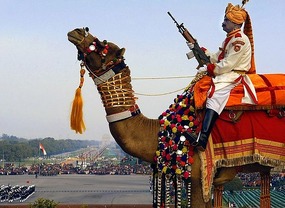


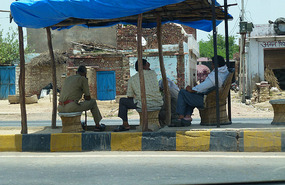
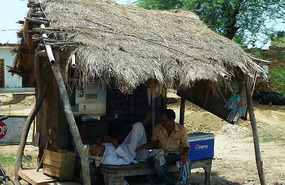
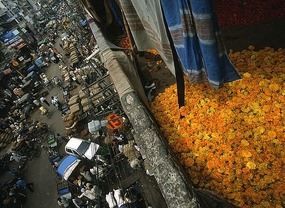
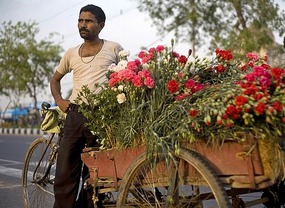
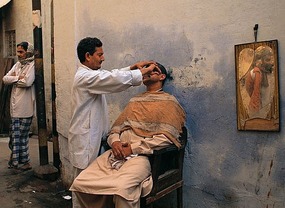
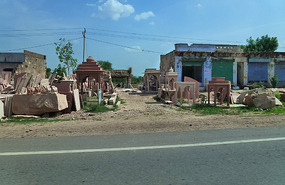
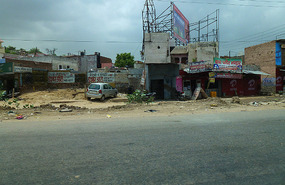
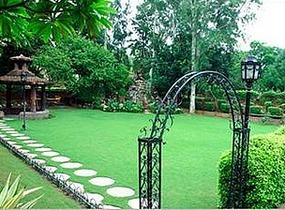
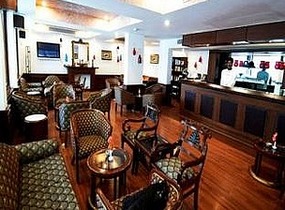
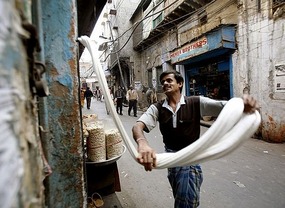
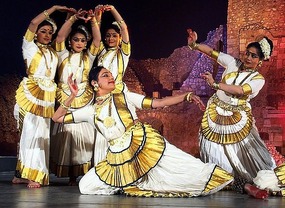
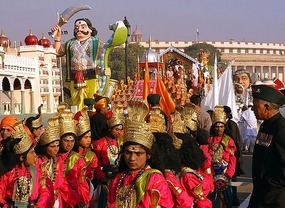

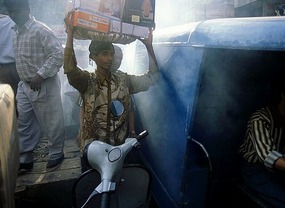
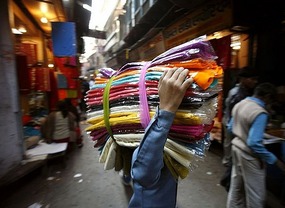



2025-05-22